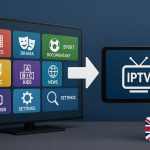Educational institutions face unique procurement challenges that require specialized approaches to achieve both fiscal responsibility and educational excellence. Unlike private sector procurement, educational procurement must balance tight budgets, regulatory compliance, transparency requirements, and the ultimate goal of enhancing student outcomes. Mastering these best practices can transform procurement from a necessary administrative function into a strategic advantage that drives institutional success.
Strategic Sourcing: Beyond the Lowest Bid
Traditional procurement often focuses solely on price, but educational institutions must adopt a more sophisticated strategic sourcing approach that considers total cost of ownership, educational impact, and long-term value. Strategic sourcing begins with comprehensive needs assessment that involves all stakeholders, from teachers and administrators to IT staff and facilities management.
Successful educational procurement professionals develop category management strategies that group similar purchases together, leveraging institutional buying power. For example, consolidating technology purchases across departments can yield significant volume discounts while ensuring compatibility and standardization. This approach also enables better vendor relationships and more efficient contract management.
Cooperative purchasing represents another powerful strategic sourcing tool. These cooperatives allow institutions to pool their purchasing power with other schools, districts, or educational organizations–effectively as a procurement community for education. These partnerships can access pre-negotiated contracts with favorable terms, reducing administrative burden while achieving better pricing than individual institutions could secure independently.
Market research forms the foundation of effective strategic sourcing. Understanding industry trends, emerging technologies, and vendor capabilities helps procurement professionals make informed decisions that align with educational goals. Regular market analysis also helps identify opportunities for innovation and cost savings that might otherwise be overlooked.
Comprehensive Vendor Evaluation: Looking Beyond Price
Educational institutions must evaluate vendors across multiple dimensions to ensure they select partners who can truly support educational objectives. A robust vendor evaluation process should include financial stability assessment, technical capability review, and cultural fit evaluation.
Financial stability analysis protects institutions from vendor failures that could disrupt educational activities. This includes reviewing audited financial statements, credit ratings, and business continuity plans. Educational institutions cannot afford to have critical vendors disappear mid-contract, leaving students and staff without essential services or products.
Technical capability evaluation must assess not only current products and services but also the vendor’s capacity for innovation and adaptation. Educational technology evolves rapidly, and vendors must demonstrate ability to provide ongoing support, updates, and enhancements throughout the contract period.
References and past performance carry particular weight in educational procurement. Speaking with other educational institutions about their experiences provides invaluable insights into vendor reliability, customer service quality, and problem-resolution capabilities. Educational environments have unique requirements that general business references may not address adequately.
Cultural alignment often determines long-term partnership success. Vendors who understand educational missions, respect institutional values, and demonstrate commitment to student success make better partners than those focused solely on profit maximization. This alignment becomes especially important for long-term contracts and strategic partnerships.
Competitive Bidding: Transparency and Fairness
Educational institutions typically operate under strict competitive bidding requirements designed to ensure transparency and fair competition. Effective procurement professionals master these processes while maximizing competitive advantage within regulatory constraints.
Request for Proposal (RFP) development requires careful balance between specificity and flexibility. Overly restrictive specifications may eliminate qualified vendors or innovative solutions, while vague requirements can lead to proposals that don’t meet actual needs. The best RFPs clearly communicate institutional requirements while allowing vendors to propose creative solutions.
Evaluation criteria must be established before the bidding process begins, with clear weighting that reflects institutional priorities. Price remains important, but factors like quality, service, delivery capability, and educational impact should receive appropriate consideration. Transparent evaluation criteria help ensure fair competition and defensible selection decisions.
Bid evaluation teams should include diverse perspectives from end users, technical experts, and procurement professionals. This multi-disciplinary approach helps ensure selected vendors can meet both technical requirements and practical implementation needs.
Contract Negotiation: Protecting Institutional Interests
Educational contract negotiation requires understanding both institutional needs and vendor capabilities. Successful negotiations create win-win agreements that provide value to both parties while protecting institutional interests.
Performance standards and service level agreements must be clearly defined and measurable. Educational institutions cannot accept vague commitments that leave room for interpretation. Specific metrics, response times, and quality standards help ensure vendors deliver promised value.
Risk allocation represents a critical negotiation area. Educational institutions should avoid accepting unnecessary risks, particularly those related to vendor performance, data security, or regulatory compliance. Professional indemnification, liability limits, and insurance requirements help protect institutional assets.
Payment terms should align with institutional cash flow patterns while providing appropriate vendor protection. Educational institutions often have predictable funding cycles that smart negotiation can leverage for better terms or pricing.
Vendor Relationship Management: Building Strategic Partnerships
Effective vendor relationship management transforms transactional interactions into strategic partnerships that drive continuous improvement and innovation. Regular performance reviews, open communication channels, and collaborative problem-solving create environments where both parties can succeed.
Performance monitoring should be ongoing rather than limited to contract renewal periods. Regular check-ins help identify issues early when they’re easier to resolve and provide opportunities for process improvements that benefit both parties.
Partnership development involves sharing institutional goals and challenges with key vendors, enabling them to propose solutions that align with educational objectives. The best vendor partners become extensions of institutional teams, contributing expertise and innovation that enhance educational outcomes.
Conclusion
Educational procurement management requires specialized knowledge, strategic thinking, and commitment to institutional mission. By implementing these best practices, procurement professionals can deliver exceptional value while supporting educational excellence. Success requires ongoing professional development, collaborative relationships, and unwavering focus on student success as the ultimate measure of procurement effectiveness.
Lynn Martelli is an editor at Readability. She received her MFA in Creative Writing from Antioch University and has worked as an editor for over 10 years. Lynn has edited a wide variety of books, including fiction, non-fiction, memoirs, and more. In her free time, Lynn enjoys reading, writing, and spending time with her family and friends.















